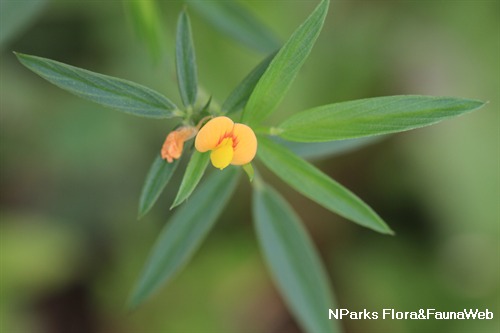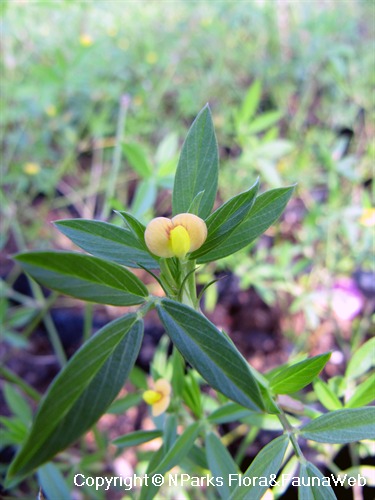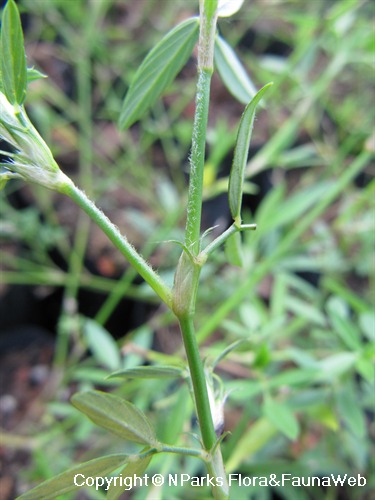
Back
Stylosanthes humilis Kunth
| Family Name: | Fabaceae (Leguminosae) |
| Synonyms: | Stylosanthes figueroae Mohlenbr., Stylosanthes sundaica Taub. |
| Common Name: | Townsville Stylo |
Name
Classifications and Characteristics
| Plant Division | Angiosperms (Flowering Seed Plants) (Dicotyledon) |
|---|---|
| Plant Growth Form | Herbaceous Plant |
Biogeography
| Native Distribution | Tropical America |
|---|---|
| Native Habitat | Terrestrial |
| Preferred Climate Zone | Tropical |
Description and Ethnobotany
| Growth Form | It is a prostrate to erect herb growing up to 0.7m tall. |
|---|---|
| Foliage | Compound leaves are trifoliate with narrowly elliptic leaflets. |
| Flowers | Yellow to light orange flowers are small and pea-shaped. Each flower has 5 yellow-tipped stamens. |
| Cultivation | This species is tolerant of salt and heavy metals. |
| Ethnobotanical Uses | Others: This species is used as pasture to feed cattle in tropical climates. It also repels and kills tick larvae, Boophilus microplus (Fernandez-Ruvalcaba et al. 1999). |
Landscaping Features
| Landscape Uses | Groundcover |
|---|
Fauna, Pollination and Dispersal
| Fauna Pollination Dispersal Associated Fauna | Bee-Attracting |
|---|
Plant Care and Propagation
| Light Preference | Full Sun |
|---|---|
| Water Preference | Moderate Water |
| Rootzone Tolerance | Fertile Loamy Soils |
| Propagation Method | Seed |
Foliar
| Mature Foliage Colour(s) | Green |
|---|---|
| Foliar Type | Compound |
Floral (Angiosperm)
| Flower Colour(s) | Yellow / Golden |
|---|---|
| Flower Symmetry | Bilateral |
Image Repository
Others
| Master ID | 30736 |
|---|---|
| Species ID | 5056 |
| Flora Disclaimer | The information in this website has been compiled from reliable sources, such as reference works on medicinal plants. It is not a substitute for medical advice or treatment and NParks does not purport to provide any medical advice. Readers should always consult his/her physician before using or consuming a plant for medicinal purposes. |





